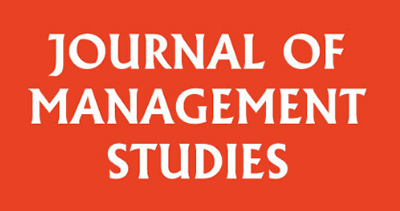
Lasting relationships require obtaining a tricky balance of control and trust. Relationships are hard work, be they in organizations, among organizations, or even in the private sphere. Management research provides overwhelming evidence that enduring, prosperous relationships depend on balancing control and trust. So far, researchers settled on two kinds of the relationship between control and trust:
- Either control or trust (substitutional) – control and trust contradict or replace one another. For example, tightening of control signals distrust, and hence, as control increases, trust will decrease.
- Both control and trust (complementary) – control and trustexist in a relationship, or even reinforce one another: the use of one form can increase the use of or benefit of the other [1]. For example: well-articulated control mechanisms can instill trust.
What is missing in this research is a stronger focus on managers and what they do to balance control and trust over the course of a relationship. This is what we did in our recent paper, published in the Journal of Management Studies. Based on the work of Putnam et al. [2], we conducted a longitudinal case study of how managers not only reacted to control and trust tensions but also created them through their actions. We focused on paradoxical control and trust dynamics, considering control and trust as opposing yet also co-dependent poles.
Our study explored an interorganizational relationship between a large Danish pharmaceutical company, Lundbeck, a biotech firm, and a university spanning 2005-2011 (and beyond). The relationship developed in response to an emergent research agenda concerning the role of brain receptors in neurological disorders such as Alzheimer’s and Parkinson’s diseases. The uncertainty of the context was immense and created control and trust tensions. Our empirical material combined 50 interviews, approximately 4,000 hours of observation, and an extensive archival material collected mainly over three years (2009-2011). The study led to two main findings.
1) Managers use a large repertoire of responses to deal with control and trust tensions – what we called creating a governance path. What fascinated us about the case was the complex repertoire of responses that Lundbeck’s managers used to govern the inter-organizational relationships that surrounded the development of this emerging research agenda. The managers skillfully and creatively connected formal and informal governance mechanisms and developed what we called a governance path. The path ensured the performance of the relationship in time and created good conditions for the relationship to prosper across time. We observed four responses that managers used simultaneously to ensure the performance and endurance of the relationship, two of which reflected a new response category: the More-Than.
2) A novel response – More-Than responses to deal with control and trust dynamics: We identified a third way of relating control and trust beyond Either-Or and Both-And, called the More-Than. More-Than responses involve “connecting oppositional pairs, moving outside of them, or situating them in a new relationship” [2, p. 128]. More-Than responses were particularly relevant to ensure the endurance of the relationship, and managers enacted them in two ways:
- Fulfilling promises is aboutfulfilling past promises and articulating promises for the future. For example, Lundbeck managers enacted the researcher’s patent files as reinforcing their promise to explore commercial opportunities together, that is, anticipating that Lundbeck would eventually take over the patents; they also enacted the researchers’ center of excellence as reinforcing their promise to support the research.
- Transcending moving outside of a paradoxical system to a new level of meaning or by expanding the boundaries of an organization’s context. For example,the Lundbeck managers enacted three contracts together as a novel and creative response to a paradox of controlling ownership and trusting continued activity that will increase the value of the patents.
Besides these More-Than responses, our managers also used Both-And responses to ensure the performance of the relationship in time. They did so not only by balancing but also through paradoxical thinking:
- Balancing “searches for ways to embrace both poles through accepting the contradiction, working through the tensions, meeting competing demands, and finding an equilibrium point” [2, p. 124]. The managers balanced different domains of activity and interest. They balanced control and trust across basic research agreements that reflected science and acquisition and consultancy agreements that reflected commercial interests.
- Paradoxical thinking makes tensions between control and trust explicit and clear. For example, the managers expressed the paradox of controlling commercial opportunities through ownership (patent applications) and trusting the continued advancement of the field (the center), and were thereby more able to engage with the issue and manage it appropriately with the combination of formal and informal contracts.
How can practitioners use our findings? The management literature has so far pointed to only few managerial practices that address control and trust tensions in a relationship. This led us to propose a theory of managerial responses that translates into actions for managers who want to embrace a more diversified repertoire to deal with control and trust tensions. First, we suggest that managers should develop and connect several informal and formal governance mechanisms into a governance path. The path requires various management responses on performance and endurance, and stability and change. Engaging in the managerial responses of balancing and paradoxical thinking will boost the performance of the relationship while fulfilling promises and transcending will ensure its endurance. Engaging in balancing and fulfilling promises will ensure the stability (continuity) of the relationship while paradoxical thinking and transcending will help managers both create and deal with change from one phase of a relationship to the next.
References
[1] Cao, Z. and Lumineau, F. (2015). ‘Revisiting the interplay between contractual and relational governance: A qualitative and meta-analytic investigation’. Journal of Operations Management, 33–34, 15–42.
[2] Putnam, L. L., Fairhurst, G. T. and Banghart, S. (2016). ‘Contradictions, dialectics, and paradoxes in organizations: A constitutive approach’. Academy of Management Annals, 10, 65–171.
Photo by Patrick Fore on Unsplash

0 Comments